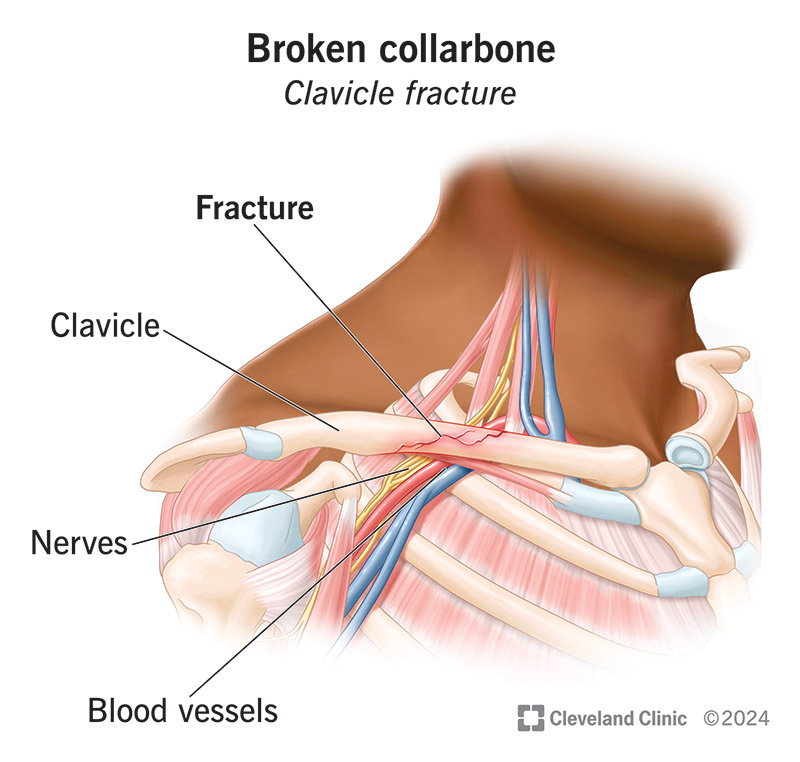A clavicle fracture (broken collarbone) is a serious injury that can happen in a moment and take a long time to heal. Most clavicle fractures heal with conservative treatment. But you may need surgery if pieces of your broken collarbone move out of place
Advertisement
Cleveland Clinic is a non-profit academic medical center. Advertising on our site helps support our mission. We do not endorse non-Cleveland Clinic products or services. Policy

A clavicle fracture (broken collarbone) is a common injury that happens when the bone between your shoulder blade and breastbone breaks. Treatment is physical therapy and wearing a sling or immobilizer to keep the pieces of your collarbone in place while it heals. But you may need surgery if the sections of bone move around.
Advertisement
Cleveland Clinic is a non-profit academic medical center. Advertising on our site helps support our mission. We do not endorse non-Cleveland Clinic products or services. Policy
Your healthcare provider might use various terms to describe your fracture. They might describe it as:
Your provider may also use a specific classification system to label your fracture as a certain type. These types describe the fracture’s location and whether it affects nearby tissue or ligaments. The classification systems help your provider plan your treatment.
Symptoms of a broken collarbone may include:
Advertisement
Most broken collarbones happen because of a traumatic injury, like:
Most clavicle fractures heal completely and without any complications. But you should contact your healthcare provider if you have issues like:
Get help right away if you think you’ve broken your clavicle. A healthcare provider will:
X-rays will show the break location and type. Your provider may do a CT scan if you have more than one fracture.
Most clavicle fractures heal well with conservative treatment. Only a small percentage will need surgery. Standard treatment for a broken collarbone includes:
Advertisement
Clavicle fracture recovery times may depend on factors like your age and the kind of fracture that you have. On average, healing may take:
Your healthcare provider will let you know when it’s safe to return to your usual activities.
A clavicle fracture is a serious injury. Call 911 (or your local emergency service number) or go to an emergency room if you think you may have one.
If you’re recovering from a broken collarbone, contact a healthcare provider right away if you develop any new or unusual symptoms like:
If you’re recovering from a broken clavicle, follow these guidelines.
Do:
Advertisement
Don’t:
A clavicle fracture can happen in a moment, disrupt your daily routine and take weeks or months to heal. You may feel awkward about asking people to act as temporary chauffeurs because you can’t drive or reach into a tall cupboard because you can’t lift your arms. Chances are, they’re happy to help because they want you to get well ASAP. Pushing your recovery can backfire and cause complications.
Your healthcare provider will understand if you’re feeling antsy. They’ll keep an eye on your recovery and let you know when you can get back to your daily routine.
Advertisement
From sudden injuries to chronic conditions, Cleveland Clinic’s orthopaedic providers can guide you through testing, treatment and beyond.

Last reviewed on 05/08/2024.
Learn more about the Health Library and our editorial process.